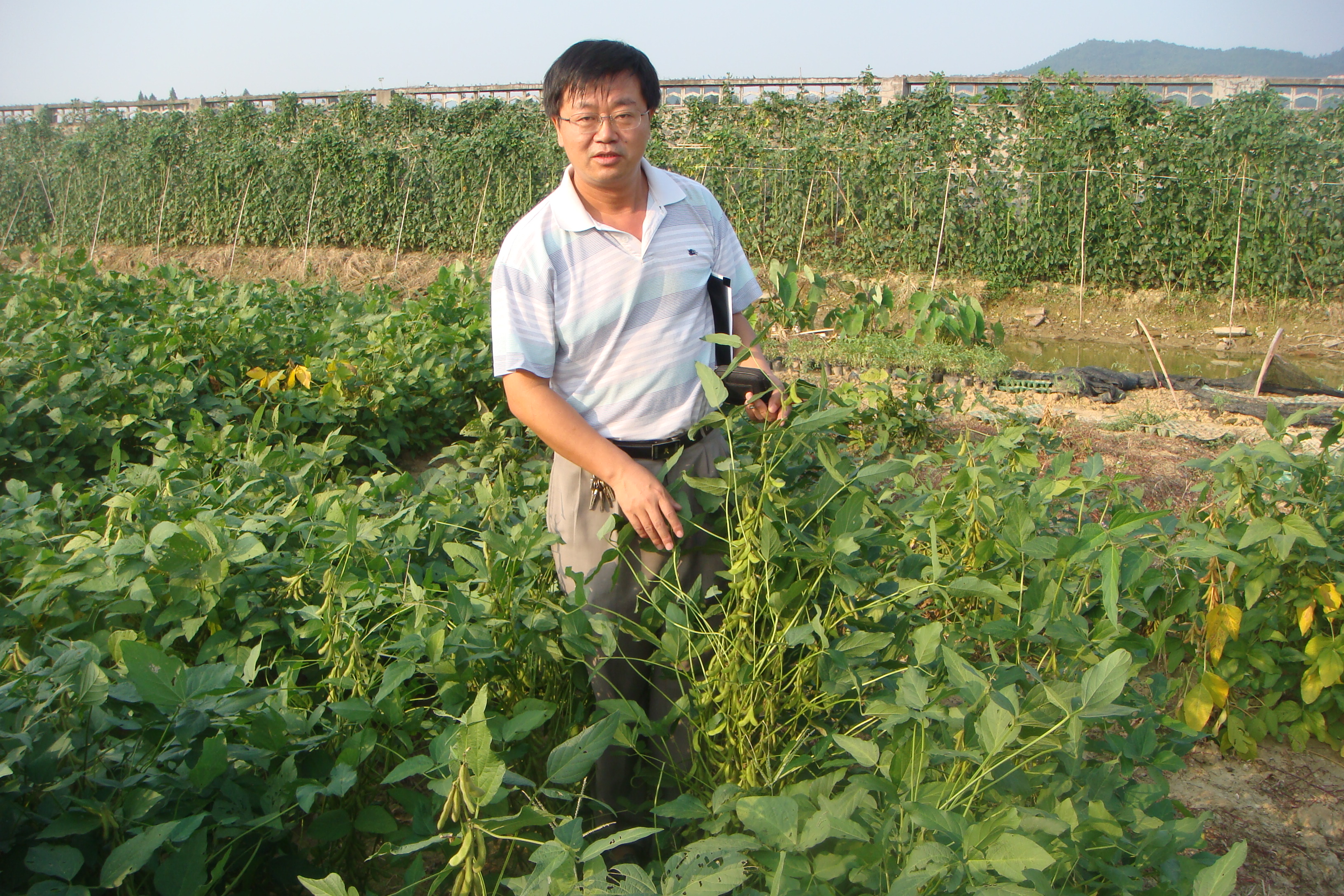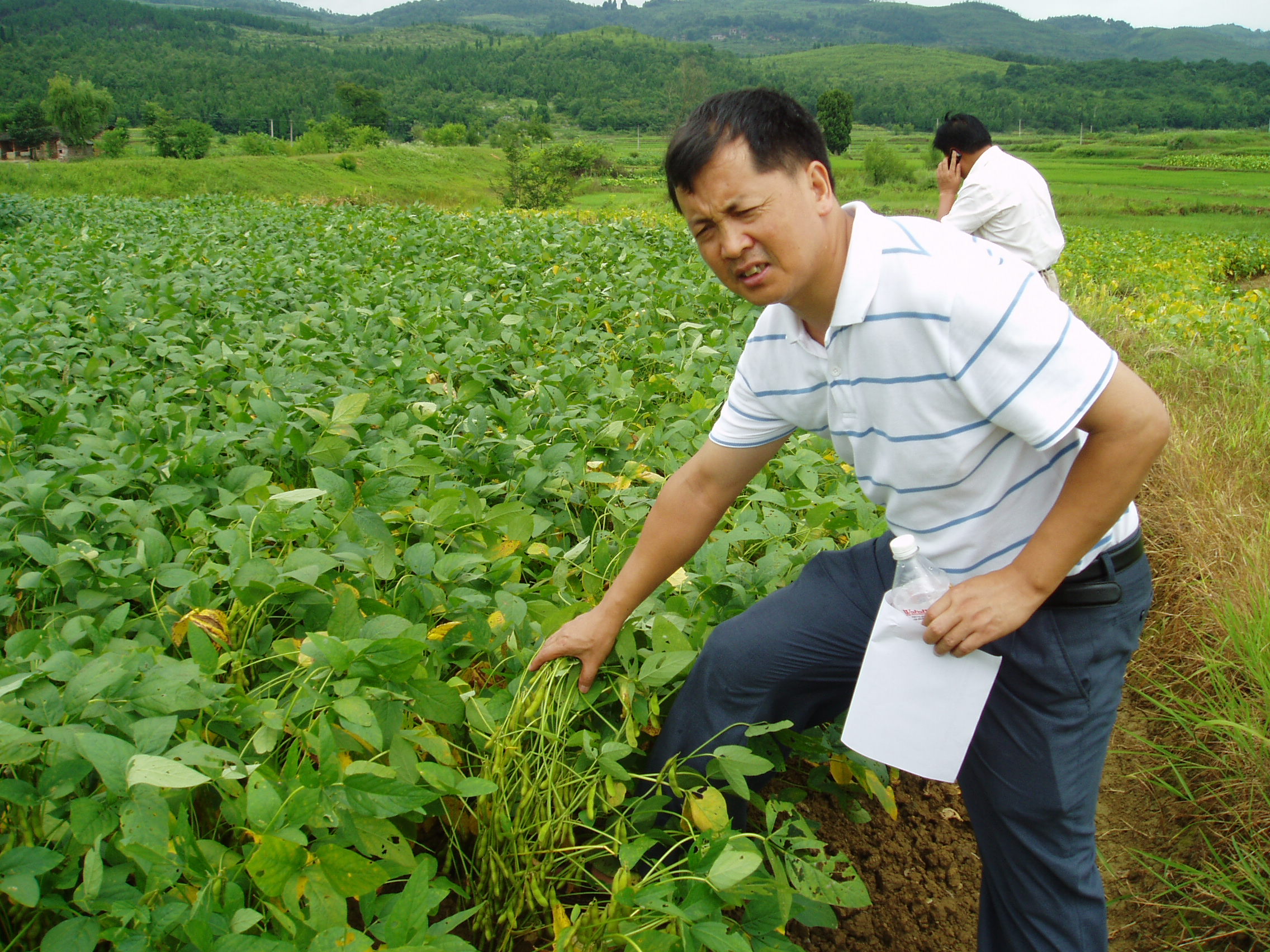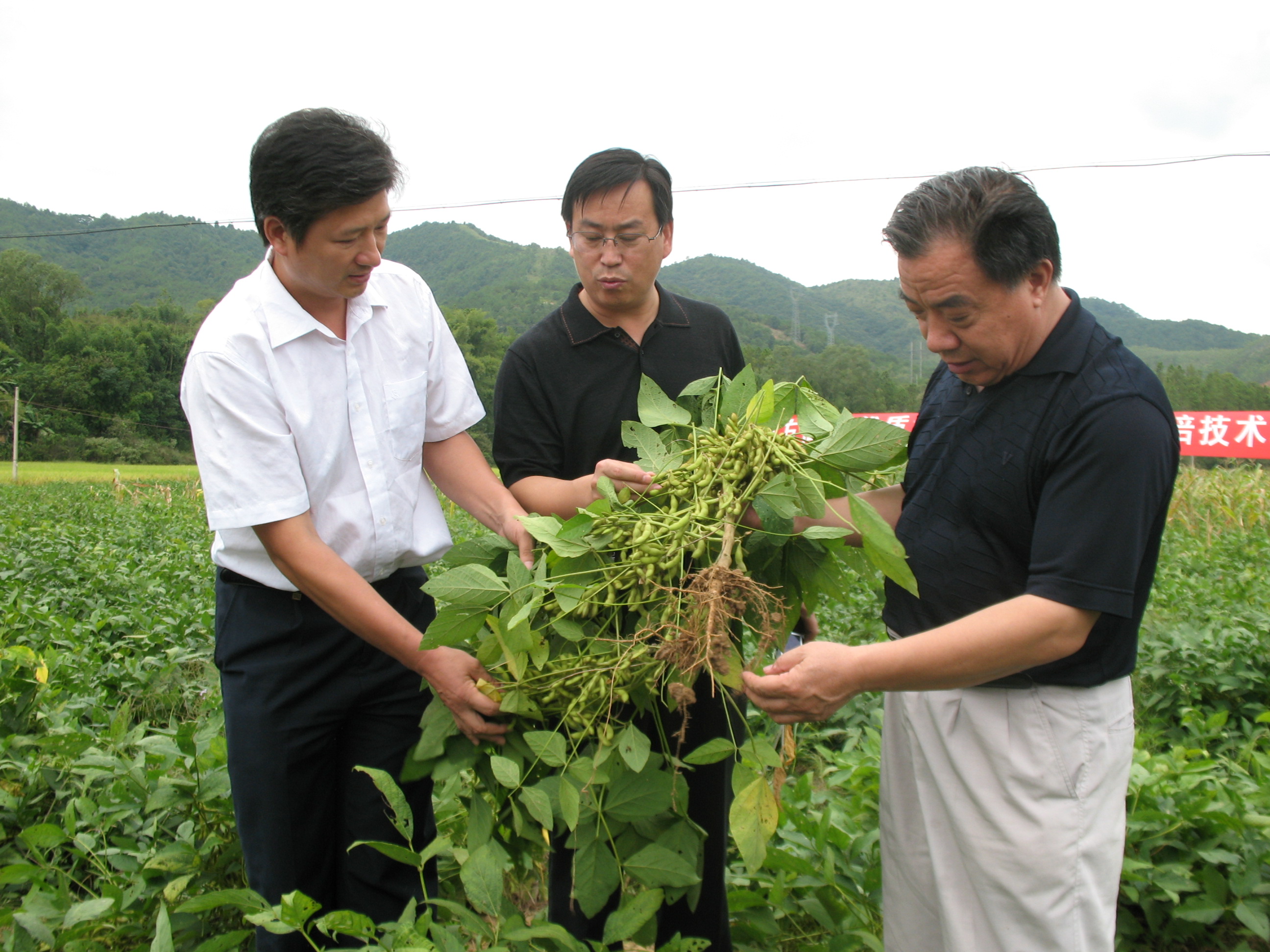Guangdong Sub-center of National Center for Soybean Improvement
Introduction
Guangdong Sub-center of National Center for Soybean Improvement is one of the twelve types of crop improvement sub-centers of the National Seed Project. It was set up on the base of the soybean genetics and breeding group and combination with physiology, disease, insects, processing and other disciplines at South China Agricultural University (SCAU). The research fields focus on soybean genetics and breeding in tropical and subtropical regions. The research history of the Guangdong Sub-center can be traced back to the 1990s when Dr. Hai Nian began to do soybean breeding by collecting soybean varieties at home and abroad. In 2009, the Guangdong Sub-center of National Center for Soybean Improvement was approved to be established by the Ministry of Agriculture.
The main functions of the Guangdong Sub-center are as follows: (1)Guide and coordinate the work of soybean research institutions in Southern China, organize joint study, academic exchange and personnel training, and solve major technical problems in breeding and agricultural production. (2) Cooperate with National Germplasm Bank, National Center of Soybean Improvement, other domestic soybean sub-centers and soybean research institutes;organize the collection, introduction, appraisal, preservation, communication and exchange of soybean germplasm resources in tropical and subtropical regions. (3) Conductthe research on the theory and method of soybean breeding; provide technical support and technical reserve for breeding new varieties. (4)Focus on the study in breeding materials and germplasm innovation; provide excellent materials for soybean breeding units in tropical and subtropical regions, breed new varieties for the ecologic area. (5) Cooperate and exchangewith international soybean research organizations and institutions in the world.
2.Research Fields
There are five research fields at the Guangdong Sub-center including: (1) the genetic basis of soybean germplasm resources and target traits for soybean breeding; (2) the soybean breeding of high quality, high yield, stable yield, acid aluminum and low phosphorus tolerance varieties; (3) the soybean breeding of disease/insect resistance and stress tolerance;(4)soybean breeding theory and method; (5)soybean genomics and biotechnology in soybean genetic breeding.
The main and functional research areas in the Guangdong Sub-center are consisted of six research laboratories shown as follows: (1) Soybean Germplasm Research Laboratory; (2) Genetic Improvement of Soybean Yield and Quality Laboratory; (3) Genetic Improvement of Soybean Resistance Laboratory; (4) Conventional Soybean Breeding and Molecular Breeding Laboratory; (5) Soybean Physiology and Biochemistry Laboratory; (6) Soybean Biotechnology Laboratory. In addition, Zengcheng test station provides field support for soybean breeding.
Introduction to Staff
There are 17 researchers in Guangdong Sub-center including 9 full-time researchers (4 professors and 5 associate professors), 2 part-time researchers, 5 skilled workers and 1 full-time management staff. Moreover, there aremore than 30 floating staffs including doctoral students, master graduate students, postdoctoral and visiting scholars.

Professor Hai Nian was selecting the breeding materials in the experimental field.

Professor Cunyi Yang was investigating the soybean traits in the demonstration field of Huachun 6 in Xintian, Hunan Province.

Denggao Liu, vice president of China Soybean Industry Association (right), was investigating the Cultivation Techniques of Spring Corn Intercropping Summer Soybean (Huaxia 3) in Meizhou, Guangdong Province.
Important Research Projects
Cooperation and communication at home and abroad: Establish cooperative relations with National Center of Soybean Improvement, six Sub-centers of Soybean Improvement and Organic Food Certification Center of Hong Kong; Establish cooperative relations with the University of Missouri, the Department of agriculture Stonewall Test Station, Mozambique Academy of Agricultural Sciences, Academy of Agricultural Sciences of Brazil and other cooperative relations. Moreover, cooperate with some agricultural demonstration centers set up by China in Africa for the promotion of soybean varieties.
Recent research results: Since 2000, the Guangdong Sub-center has bred 18 soybean varieties including 12 approved varieties at national level, and increased 1200 new germplasms among which more than 500 are excellent germplasms and more than 200 are innovative germplasms. The soybean yield of bred varieties has exceeded 230 kg/mu in the subtropical region. Over 90 articles has been published in recent years with 15 papers included by SCIjournals.

